Creating engaging EYFS outdoor areas transforms early childhood education by providing children with rich, multisensory learning experiences that support all seven areas of development. These purposefully designed spaces extend beyond traditional playgrounds, incorporating natural elements and open-ended resources that encourage exploration, creativity, and independence. From sensory gardens that stimulate curiosity to mud kitchens that promote imaginative play, well-planned outdoor environments offer unlimited opportunities for child-led learning. Each area should align with EYFS statutory requirements while fostering physical development, communication skills, and understanding of the world through hands-on discovery.
1. EYFS Outdoor Mud Kitchen Area
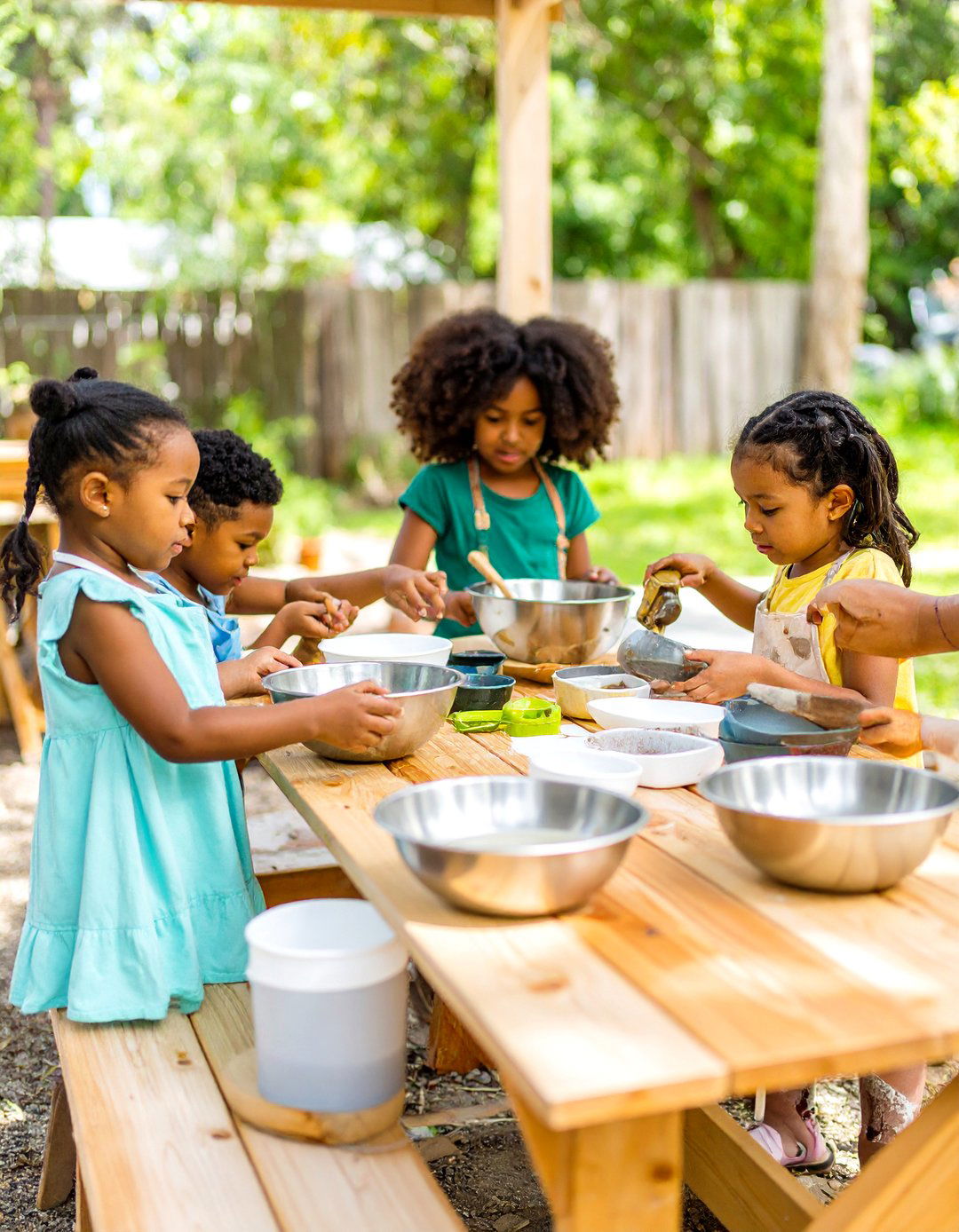
Creating an EYFS outdoor mud kitchen area provides children with endless opportunities for sensory exploration and imaginative play. This natural cooking space allows young learners to mix soil, water, leaves, and other natural materials while developing fine motor skills through pouring, stirring, and measuring activities. The mud kitchen supports role-play scenarios where children can pretend to run cafés, create magical potions, or prepare elaborate feasts for friends. Essential equipment includes wooden countertops, mixing bowls, utensils, and nearby water access for messy investigations. Children develop mathematical concepts through measuring ingredients, strengthen social skills through collaborative cooking projects, and enhance their understanding of materials and their properties. This versatile area promotes creativity while encouraging children to connect with nature in meaningful ways.
2. EYFS Outdoor Sensory Garden Area
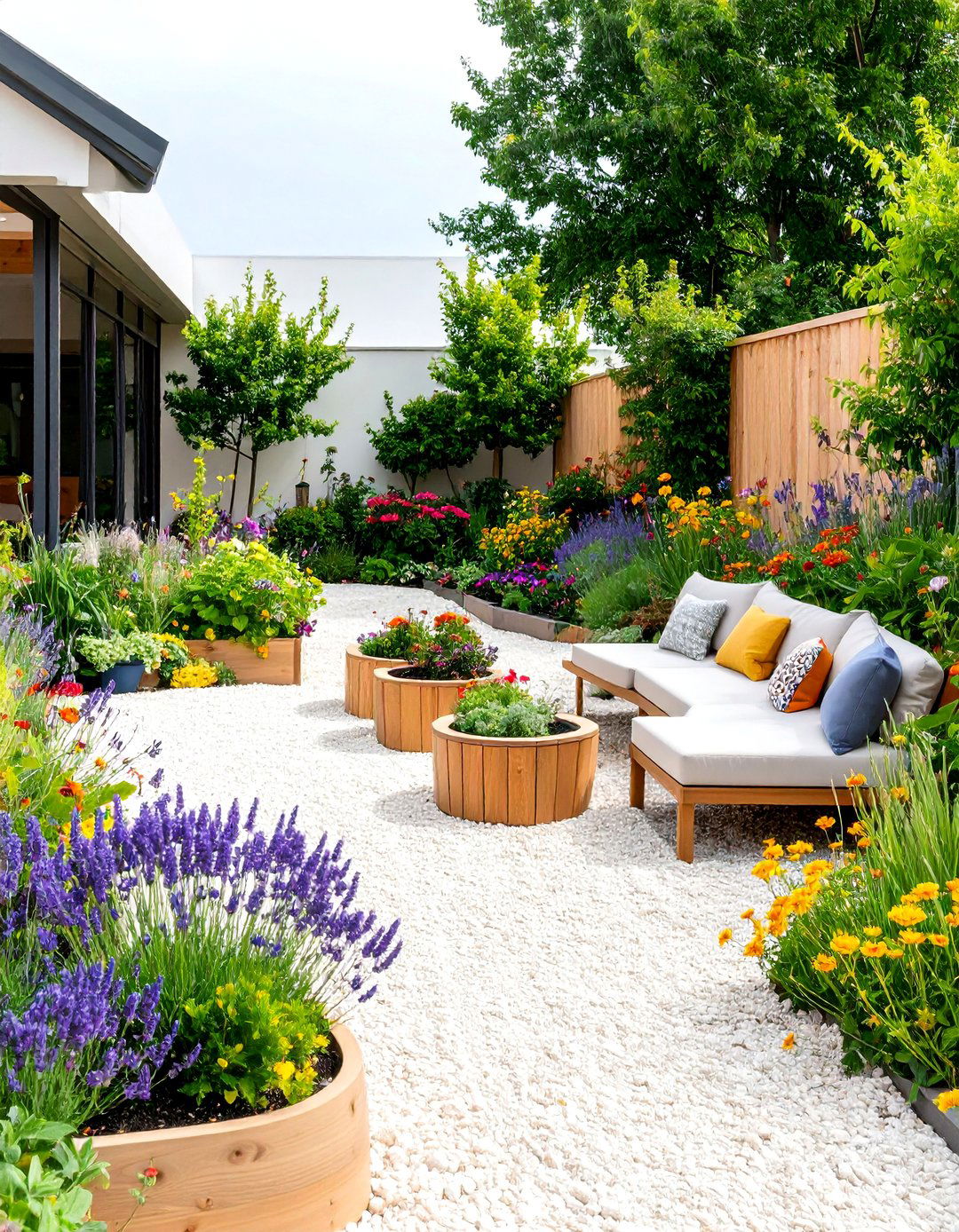
An EYFS outdoor sensory garden area engages all five senses through carefully selected plants, textures, and natural materials. This specialized space includes fragrant herbs like lavender and mint, textured plants such as lamb's ear, and colorful flowers that attract butterflies and bees. Children can touch different leaf surfaces, smell aromatic plants, listen to rustling grasses, and observe seasonal changes throughout the year. The sensory garden supports language development as children describe their observations using rich vocabulary, while also promoting scientific thinking through plant investigations. Include raised planters at child height, pathways made from different materials like pebbles and bark, and comfortable seating areas for quiet observation. This calming environment helps children regulate emotions while developing environmental awareness and respect for living things.
3. EYFS Outdoor Water Play Area

Designing an EYFS outdoor water play area creates dynamic learning experiences that fascinate young children naturally. This area features water walls, pumps, channels, and various containers that allow children to experiment with flow, volume, and cause-and-effect relationships. Through water play, children develop mathematical understanding of measurement, capacity, and comparison while strengthening gross motor skills through carrying, pouring, and splashing activities. The water area encourages scientific inquiry as children observe how water moves through different containers, creating hypotheses about floating and sinking objects. Safety considerations include non-slip surfaces, proper drainage, and age-appropriate equipment. Include waterproof storage for tools like funnels, sieves, and measuring cups. This engaging space promotes collaborative play as children work together to transport water and create elaborate water systems.
4. EYFS Outdoor Sand Play Area
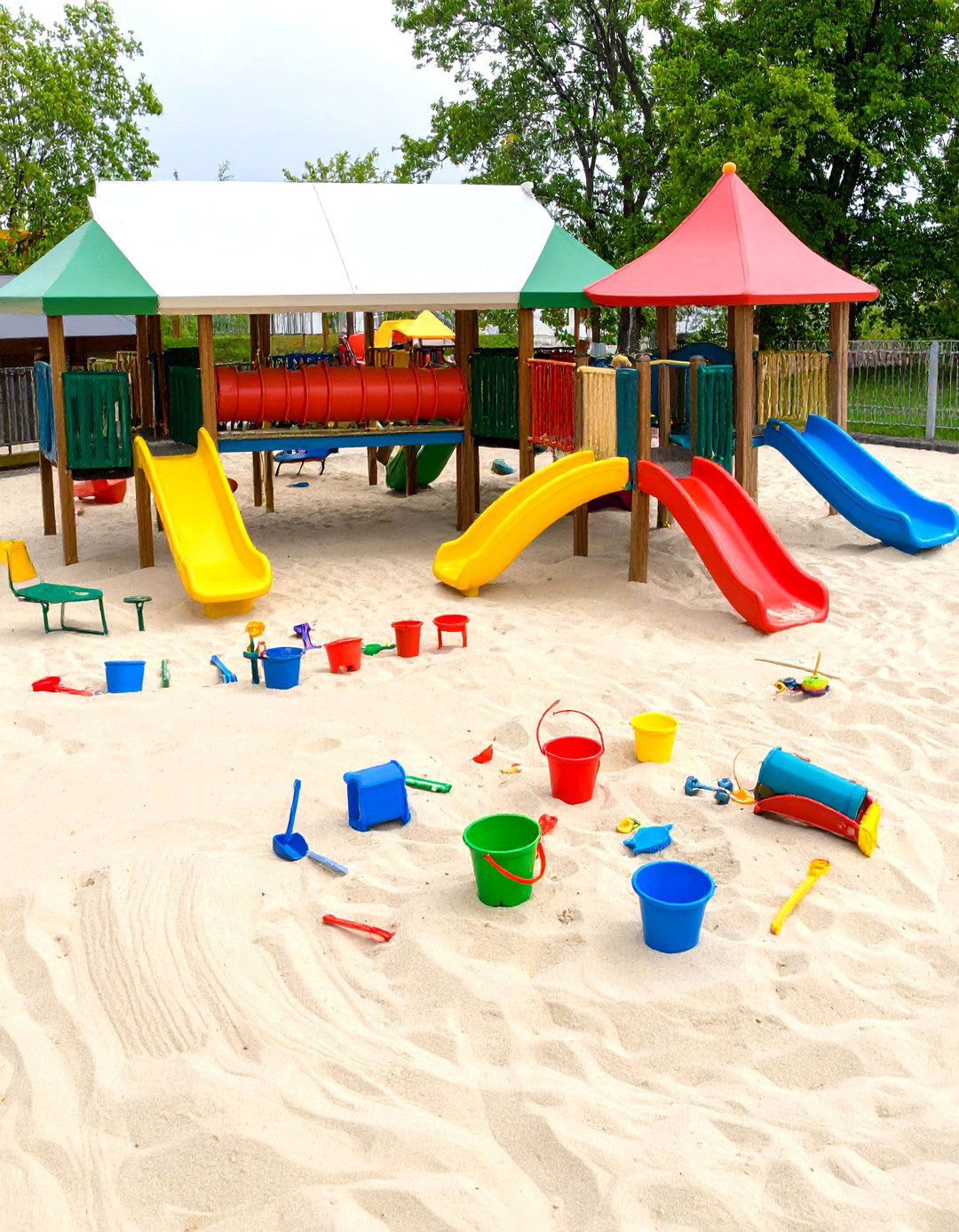
An EYFS outdoor sand play area offers rich tactile experiences that support sensory development and creative expression. This dedicated space provides opportunities for children to dig, build, mold, and construct using natural materials that respond to their manipulations. Sand play strengthens fine motor skills through scooping and pouring while developing spatial awareness as children create three-dimensional structures. The area should include various tools like buckets, spades, molds, and sieves that encourage different types of exploration and play scenarios. Children learn about texture, volume, and mathematical concepts through hands-on experimentation. A covered sandpit with removable lids maintains cleanliness while providing additional work surfaces. Include comfortable seating around the perimeter for adult supervision and child collaboration. This versatile area supports both solitary concentration and group construction projects throughout the year.
5. EYFS Outdoor Climbing Frame Area
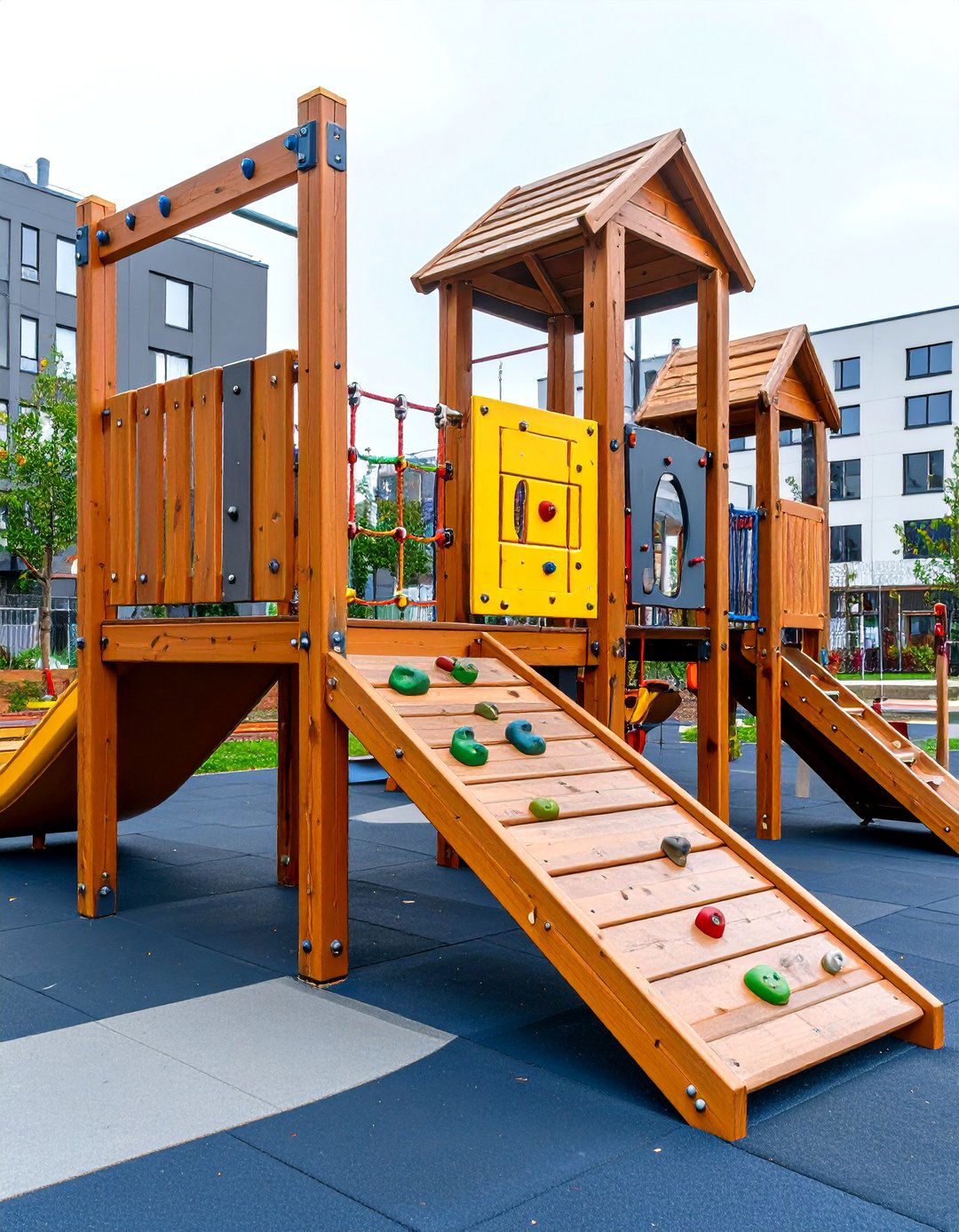
Establishing an EYFS outdoor climbing frame area promotes physical development while building confidence and problem-solving skills in young children. Age-appropriate climbing structures designed specifically for early years include low-height obstacles, sturdy construction, and soft landing surfaces to ensure safety during active play. These frameworks develop gross motor skills, spatial awareness, and risk assessment abilities as children navigate different challenges. The climbing area encourages social interaction as children take turns, offer encouragement, and collaborate to overcome obstacles together. Include varied climbing elements like rope ladders, balance beams, and tunnel crawls that cater to different skill levels and interests. Safety surfacing such as rubber matting or bark chips reduces injury risk while maintaining accessibility. This physical challenge area builds resilience as children learn to persevere through difficulties and celebrate their achievements.
6. EYFS Outdoor Construction Zone Area

An EYFS outdoor construction zone area provides large-scale building opportunities using natural and recycled materials that inspire creativity and engineering thinking. This designated space includes wooden planks, crates, tyres, and loose parts that children can manipulate to create structures, bridges, and imaginative constructions. The construction area develops problem-solving skills as children figure out how to balance materials, create stable structures, and work together on ambitious projects. Include tools like wheelbarrows, small hammers, and measuring tapes that allow children to feel like real builders while maintaining safety. This area supports mathematical learning through shape recognition, spatial relationships, and early engineering concepts. Storage solutions keep materials organized and accessible for independent use. The construction zone encourages collaborative play as children negotiate plans, share resources, and celebrate their architectural achievements together.
7. EYFS Outdoor Nature Investigation Area
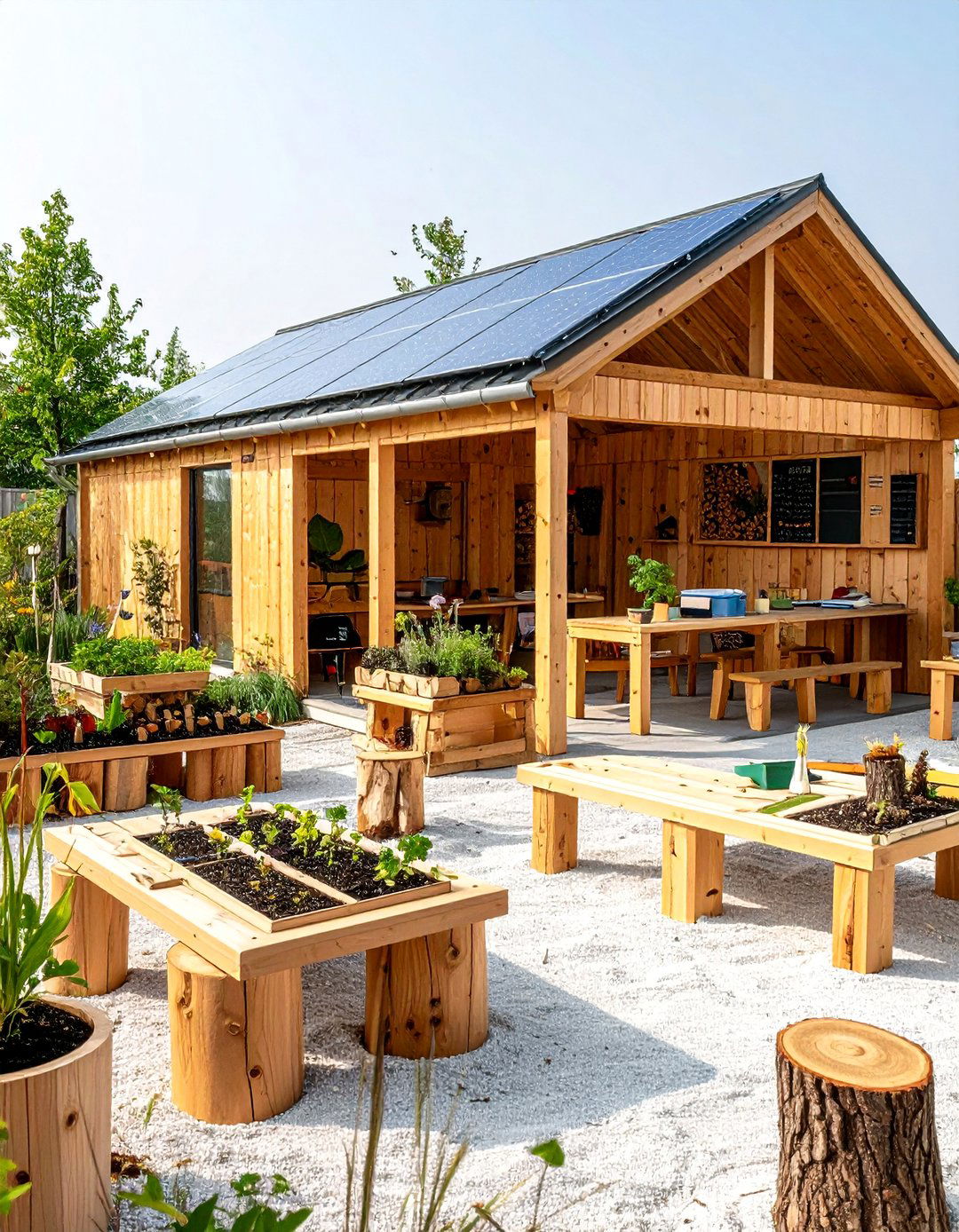
Creating an EYFS outdoor nature investigation area encourages scientific thinking and environmental awareness through hands-on exploration of natural phenomena. This space includes investigation tools like magnifying glasses, collection containers, and simple microscopes that allow children to examine insects, leaves, rocks, and other natural specimens closely. The area features bug hotels, log piles, and native plants that attract wildlife for observation and study. Children develop classification skills by sorting natural materials while learning about habitats, life cycles, and seasonal changes. Include weather recording equipment like rain gauges and wind socks that enable children to track environmental patterns. Comfortable seating and writing surfaces support nature journaling and recording discoveries. This scientific area promotes curiosity while teaching children to observe carefully, ask questions, and develop theories about the natural world around them.
8. EYFS Outdoor Storytelling Circle Area
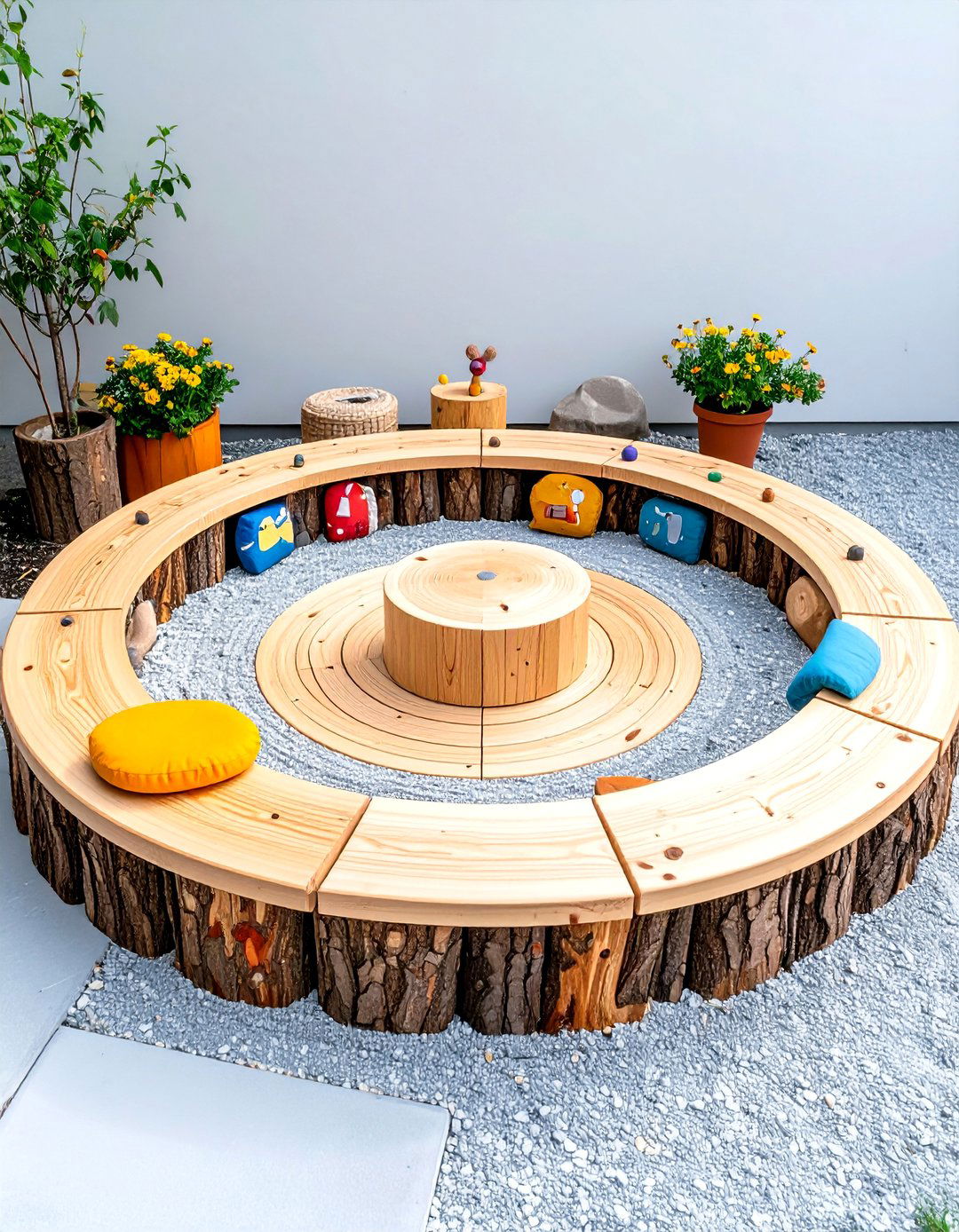
An EYFS outdoor storytelling circle area creates magical spaces for language development and imaginative expression through narrative experiences. This natural amphitheater uses logs, stones, or specially designed seating arranged in circles that bring children together for story sharing and creative communication. The outdoor setting provides rich sensory backdrops that inspire storytelling while connecting children with nature's rhythms and seasons. Include storytelling props like puppets, story stones, and dramatic play materials that encourage children to create their own narratives. The circle design ensures every child can see and participate while fostering inclusive communication experiences. Weather-resistant storage nearby keeps storytelling resources accessible for spontaneous narrative adventures. This literacy-rich area supports language development, listening skills, and creative expression while building community connections through shared stories and cultural exchanges.
9. EYFS Outdoor Performance Stage Area

Developing an EYFS outdoor performance stage area nurtures creative expression and builds confidence through music, drama, and movement activities. This elevated platform or designated performance space encourages children to share songs, dances, and theatrical presentations with audiences of peers and adults. The stage area supports expressive arts development while building communication skills and self-esteem through creative performances. Include musical instruments, costumes, and props stored in nearby weatherproof containers that enable spontaneous artistic expressions. The outdoor setting provides natural acoustics and inspiring backdrops for creative performances throughout the seasons. This performance space encourages collaboration as children work together to create shows, practice presentations, and support each other's artistic endeavors. The stage area celebrates individual talents while building community through shared creative experiences that honor diverse forms of expression.
10. EYFS Outdoor Role Play Café Area
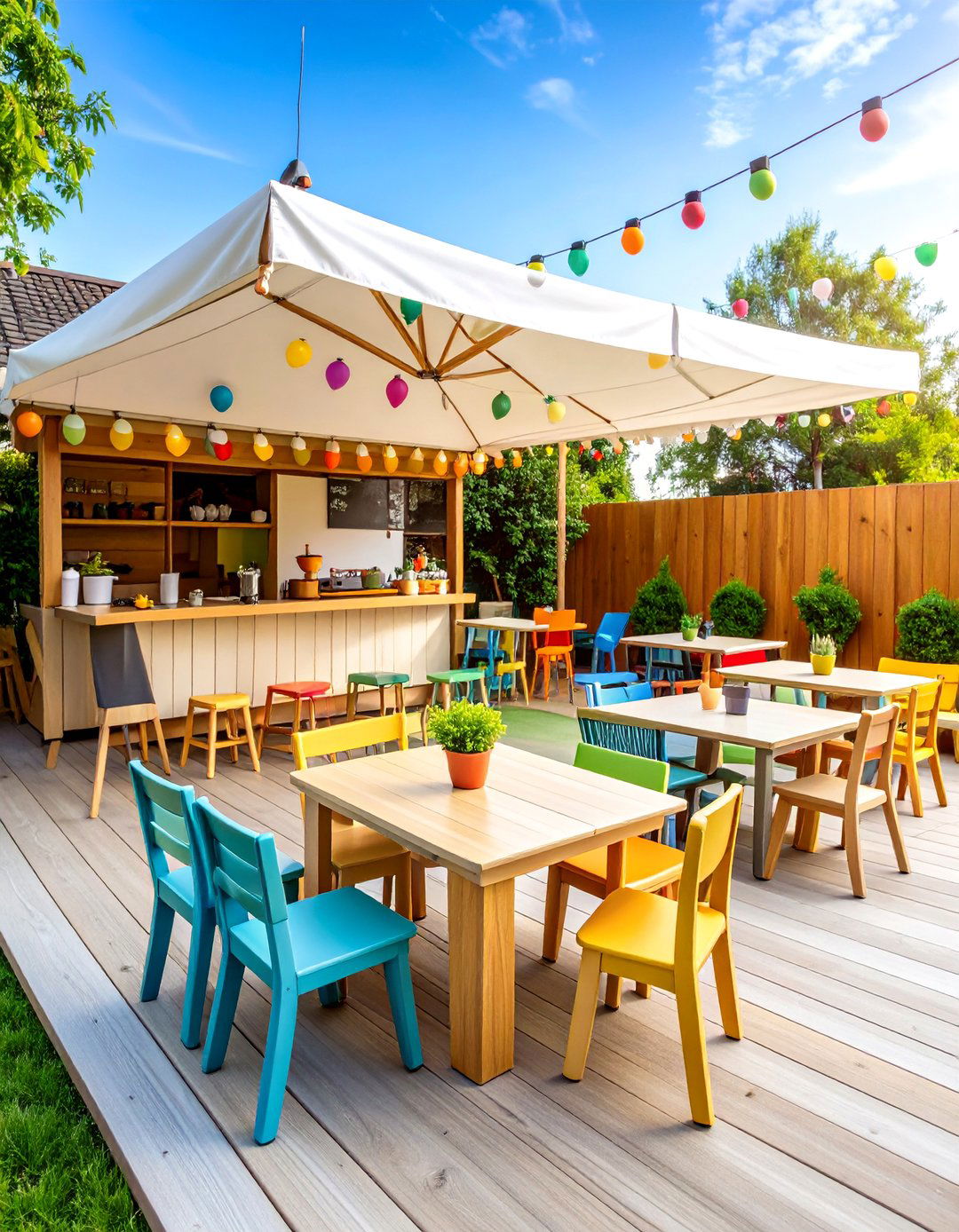
An EYFS outdoor role play café area transforms imaginative play into realistic social scenarios that develop communication and life skills. This themed space includes child-sized furniture, play kitchen equipment, and serving materials that enable children to recreate familiar social experiences outdoors. The café setting encourages language development through order-taking, menu reading, and social conversations while building mathematical skills through money handling and counting activities. Include chalkboards for menu writing, cash registers for transaction play, and comfortable seating for customer experiences. The outdoor café connects children with community concepts while developing social skills through collaborative role-playing scenarios. Weather-resistant storage maintains equipment quality while ensuring easy access for independent play. This realistic play area bridges home and school experiences while teaching children about social interactions, customer service, and community helpers.
11. EYFS Outdoor Planting and Growing Area
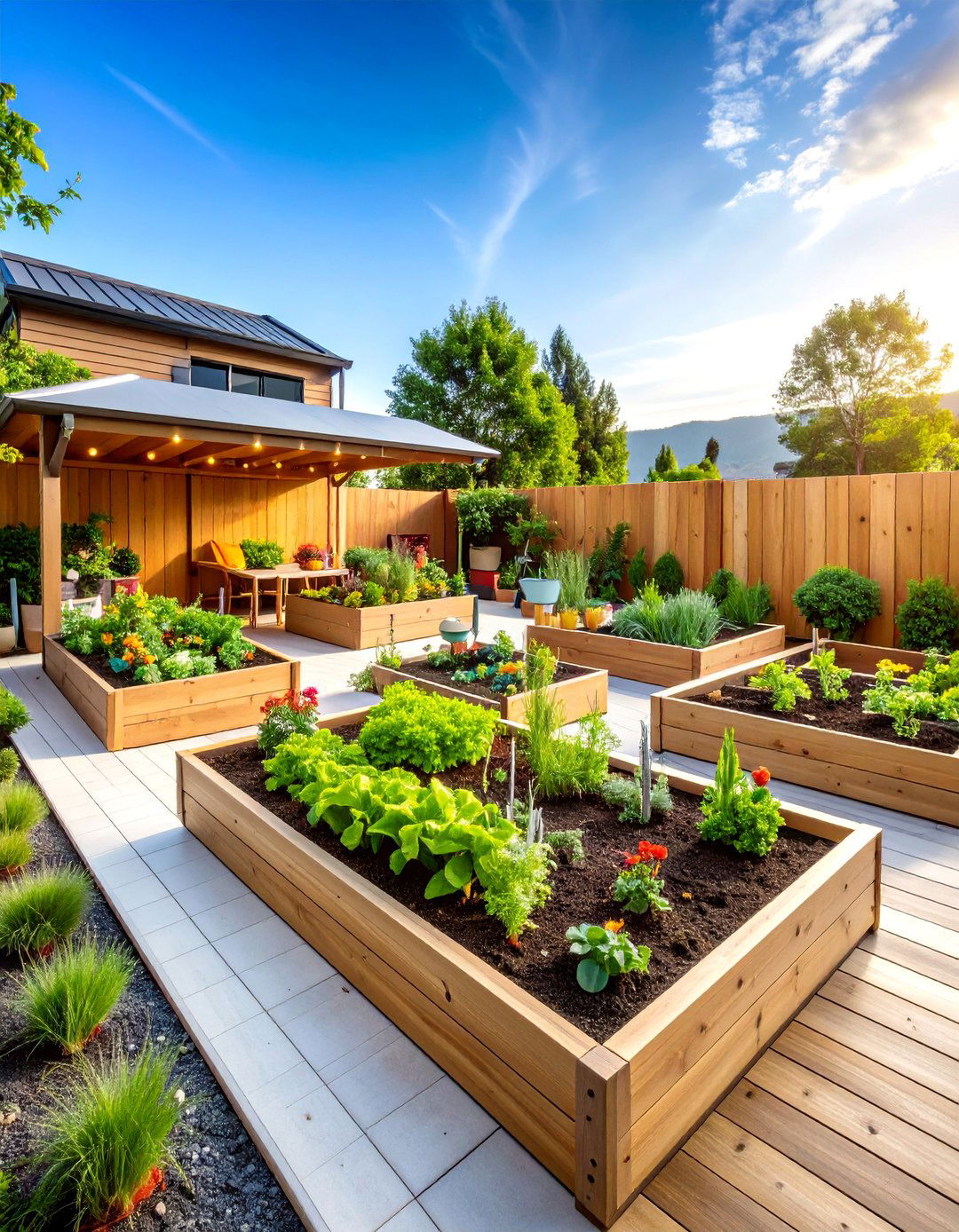
Establishing an EYFS outdoor planting and growing area teaches children about life cycles, responsibility, and environmental stewardship through hands-on gardening experiences. This dedicated growing space includes raised beds, child-sized tools, and fast-growing plants that provide quick results and maintain engagement. Children develop scientific understanding of plant needs while learning patience and care-giving skills through regular watering and maintenance activities. The growing area supports mathematical learning through measuring plant growth, counting seeds, and observing patterns in nature. Include sensory plants like herbs and textured flowers that provide rich exploration opportunities beyond basic gardening. Composting areas teach children about recycling and sustainability while connecting them to natural cycles. This nurturing space promotes responsibility while teaching children where food comes from and how their actions impact living things.
12. EYFS Outdoor Physical Activity Zone Area
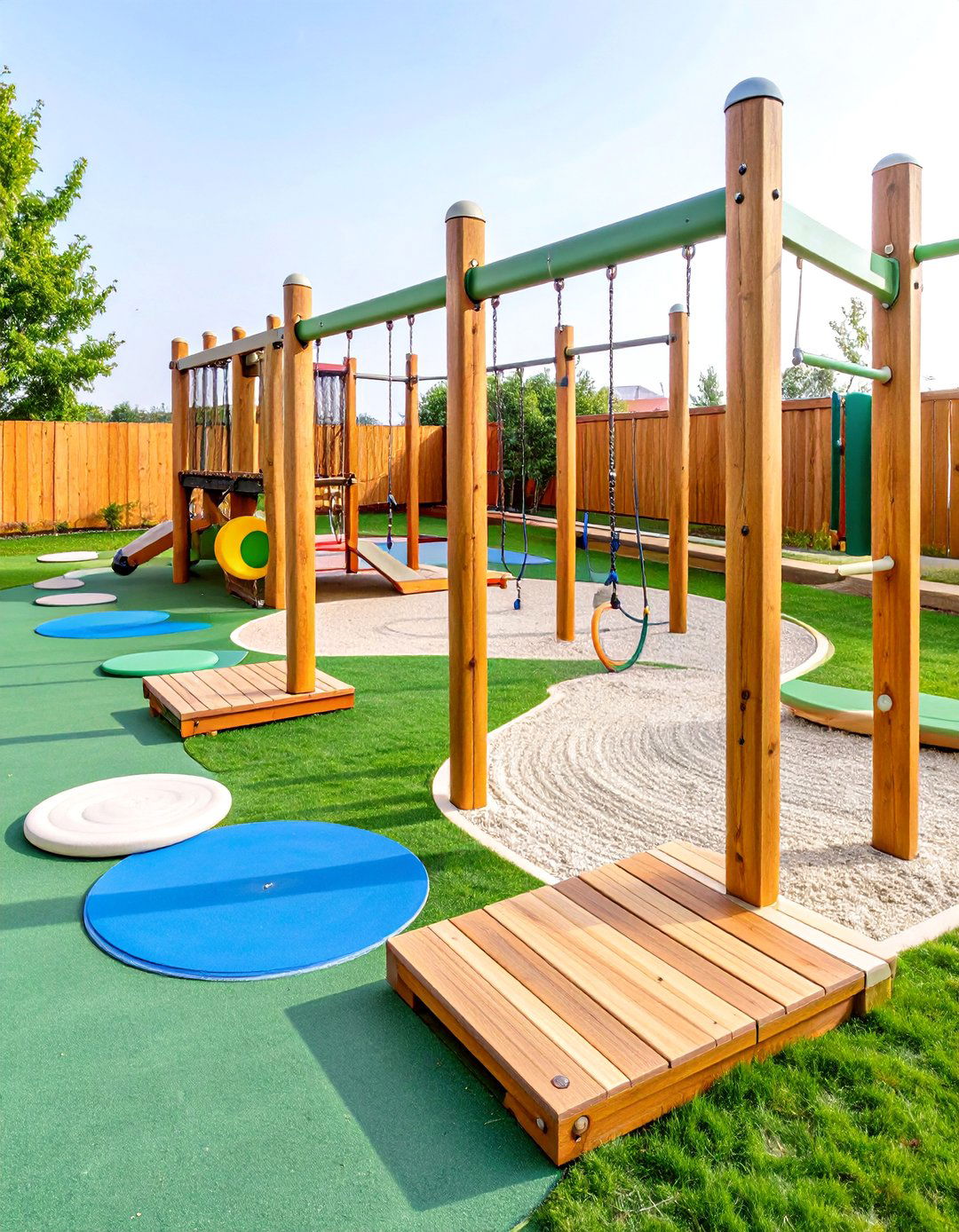
Creating an EYFS outdoor physical activity zone area promotes gross motor development through diverse movement opportunities that build strength, coordination, and fitness habits. This active space includes balance beams, stepping stones, hoops, and open areas for running, jumping, and dancing activities. The zone supports physical development goals while building confidence through achievable challenges that celebrate movement milestones. Include equipment storage that enables children to select their own physical challenges while maintaining safety and organization. The activity area encourages healthy competition and collaborative games that build social skills alongside physical abilities. Soft surfacing and clear boundaries ensure safety while providing freedom for energetic play. This fitness-focused space teaches children about healthy living while providing outlets for energy release and stress management through joyful movement experiences.
13. EYFS Outdoor Creative Arts Area
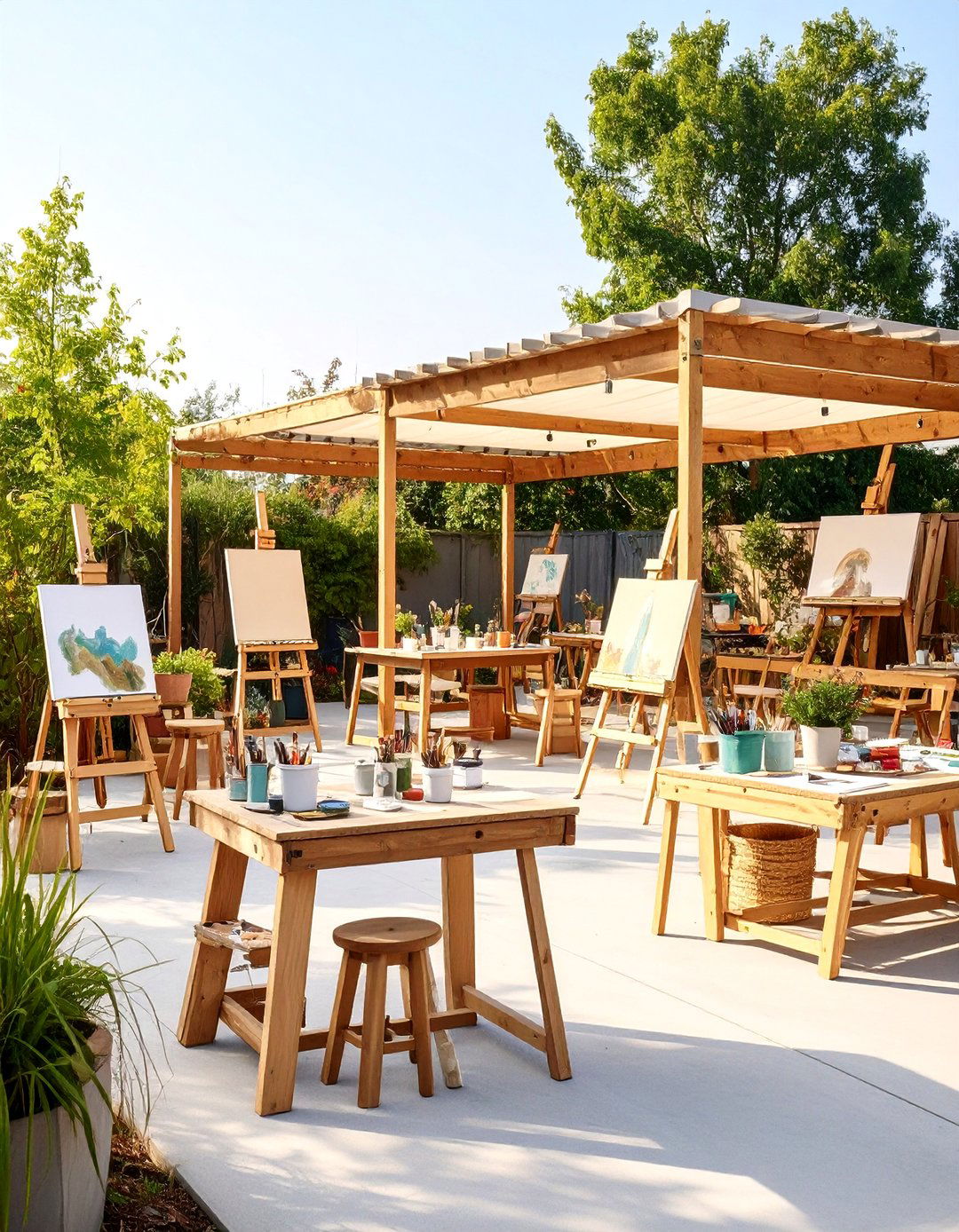
An EYFS outdoor creative arts area provides inspiring spaces for artistic expression using natural materials and weather-appropriate art supplies. This creative zone includes easels, art storage, and work surfaces that enable painting, drawing, and crafting activities in natural light with fresh air circulation. The outdoor setting provides endless inspiration through seasonal changes, natural colors, and textural materials that enhance artistic exploration. Include natural art materials like leaves, flowers, and stones that children can incorporate into their creative works. The arts area supports fine motor development through brush control and cutting activities while encouraging self-expression and aesthetic appreciation. Weather-resistant storage maintains art supplies while enabling spontaneous creative sessions. This inspiring space celebrates individual creativity while teaching children to see beauty in their environment and express their unique perspectives through various artistic mediums.
14. EYFS Outdoor Reading Nook Area
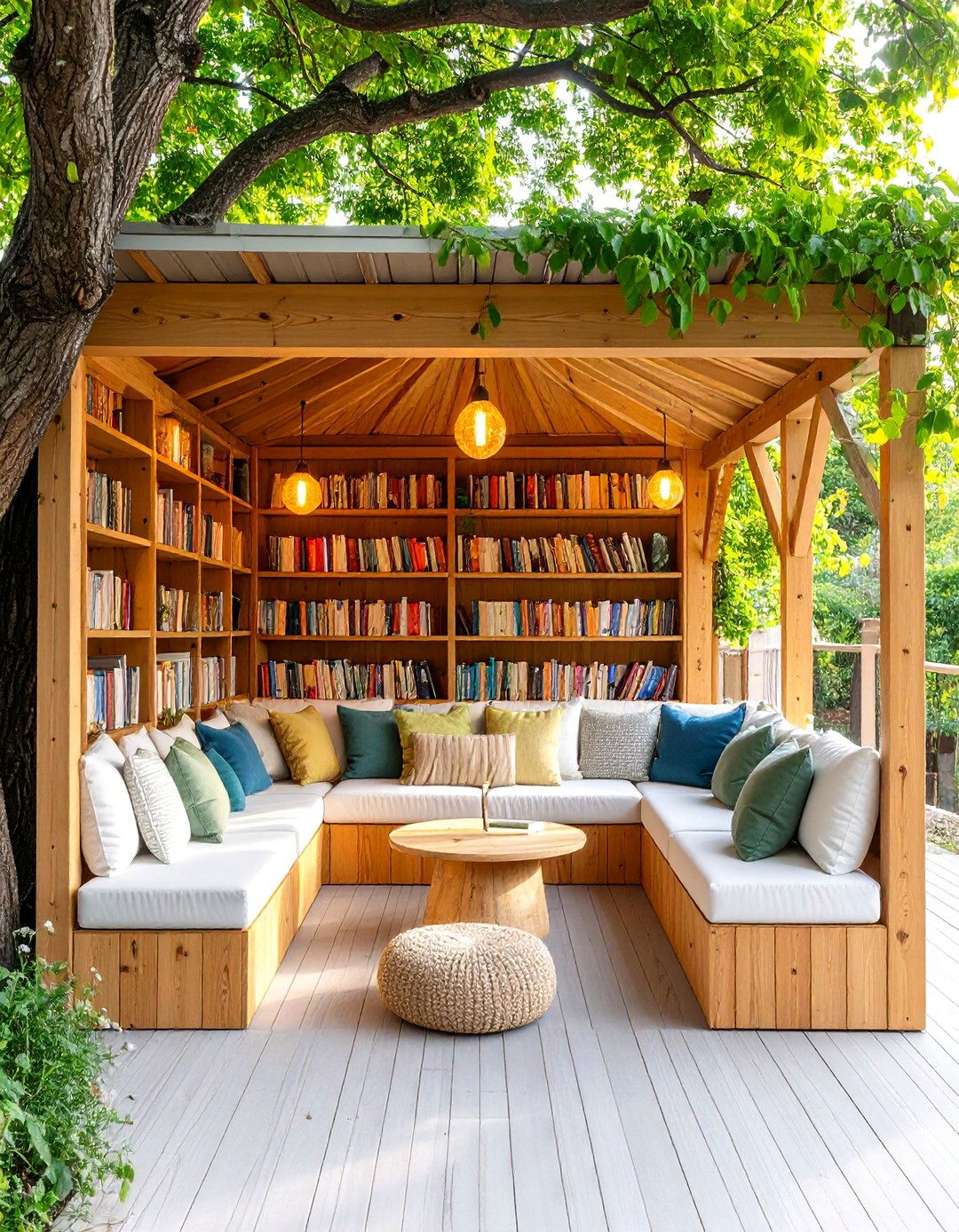
Designing an EYFS outdoor reading nook area creates peaceful spaces that promote literacy development and love of books in natural settings. This cozy area includes comfortable seating, weather-resistant book storage, and sheltered spaces that protect readers from elements while maintaining outdoor connections. The reading nook supports language development through independent book exploration and shared reading experiences in calming natural environments. Include cushions, blankets, and varied seating options that accommodate different reading preferences and group sizes. The outdoor setting provides sensory richness that enhances story comprehension while connecting literature to real-world experiences. Natural elements like trees and plants create intimate spaces that encourage sustained attention and deep engagement with books. This literacy-focused area teaches children that reading is enjoyable while providing quiet spaces for reflection and independent learning.
15. EYFS Outdoor Science Discovery Area

An EYFS outdoor science discovery area encourages inquiry-based learning through hands-on experimentation and investigation activities. This scientific space includes investigation stations, experiment materials, and observation tools that enable children to explore natural phenomena and test hypotheses outdoors. The discovery area supports scientific thinking through prediction, observation, and conclusion-drawing activities that build critical thinking skills. Include weather monitoring equipment, collection containers, and simple measuring tools that enable systematic investigations. The outdoor setting provides endless opportunities for exploring physics concepts like gravity, motion, and forces through natural play experiences. Documentation materials like clipboards and cameras help children record their scientific discoveries and share findings with others. This inquiry-focused area teaches children to ask questions, seek answers, and develop understanding through systematic exploration of their environment.
16. EYFS Outdoor Music Making Area

Creating an EYFS outdoor music making area develops auditory skills and creative expression through natural and manufactured musical instruments. This sonic space includes weather-resistant instruments, sound-making materials, and performance areas that encourage musical exploration and rhythm development. The music area supports language development through singing, rhyming, and sound discrimination activities while building cultural appreciation through diverse musical experiences. Include natural materials like logs for drumming, wind chimes for gentle sounds, and containers for sound exploration. The outdoor setting provides natural acoustics that enhance musical experiences while connecting children to environmental sounds like birdsong and wind. Storage solutions maintain instrument quality while enabling spontaneous musical sessions. This rhythm-rich area teaches children to appreciate sound and music while providing outlets for emotional expression and cultural celebration.
17. EYFS Outdoor Wildlife Observation Area
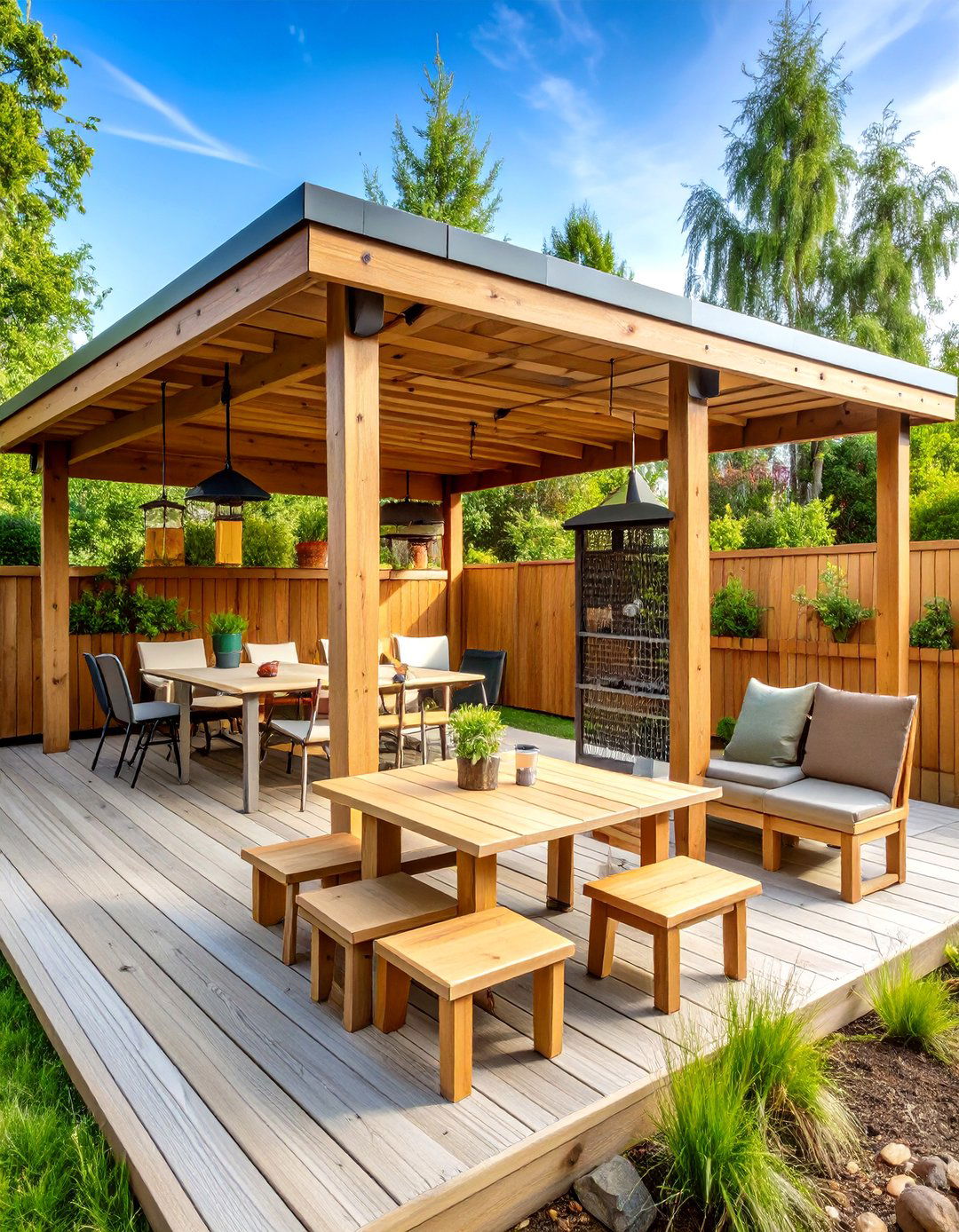
Establishing an EYFS outdoor wildlife observation area teaches children about animal behavior and habitats through patient watching and recording activities. This naturalistic space includes bird feeders, insect hotels, and comfortable observation seating that attracts local wildlife for study and appreciation. The observation area develops scientific skills through systematic watching, pattern recognition, and data collection about animal behaviors. Include binoculars, identification guides, and recording materials that enable detailed wildlife studies. The area supports environmental awareness while teaching children to respect and protect natural habitats. Quiet zones ensure minimal disruption to wildlife while providing optimal viewing opportunities throughout different seasons. This nature-focused area connects children to local ecosystems while developing patience, observation skills, and environmental stewardship attitudes through meaningful wildlife encounters.
18. EYFS Outdoor Messy Play Area
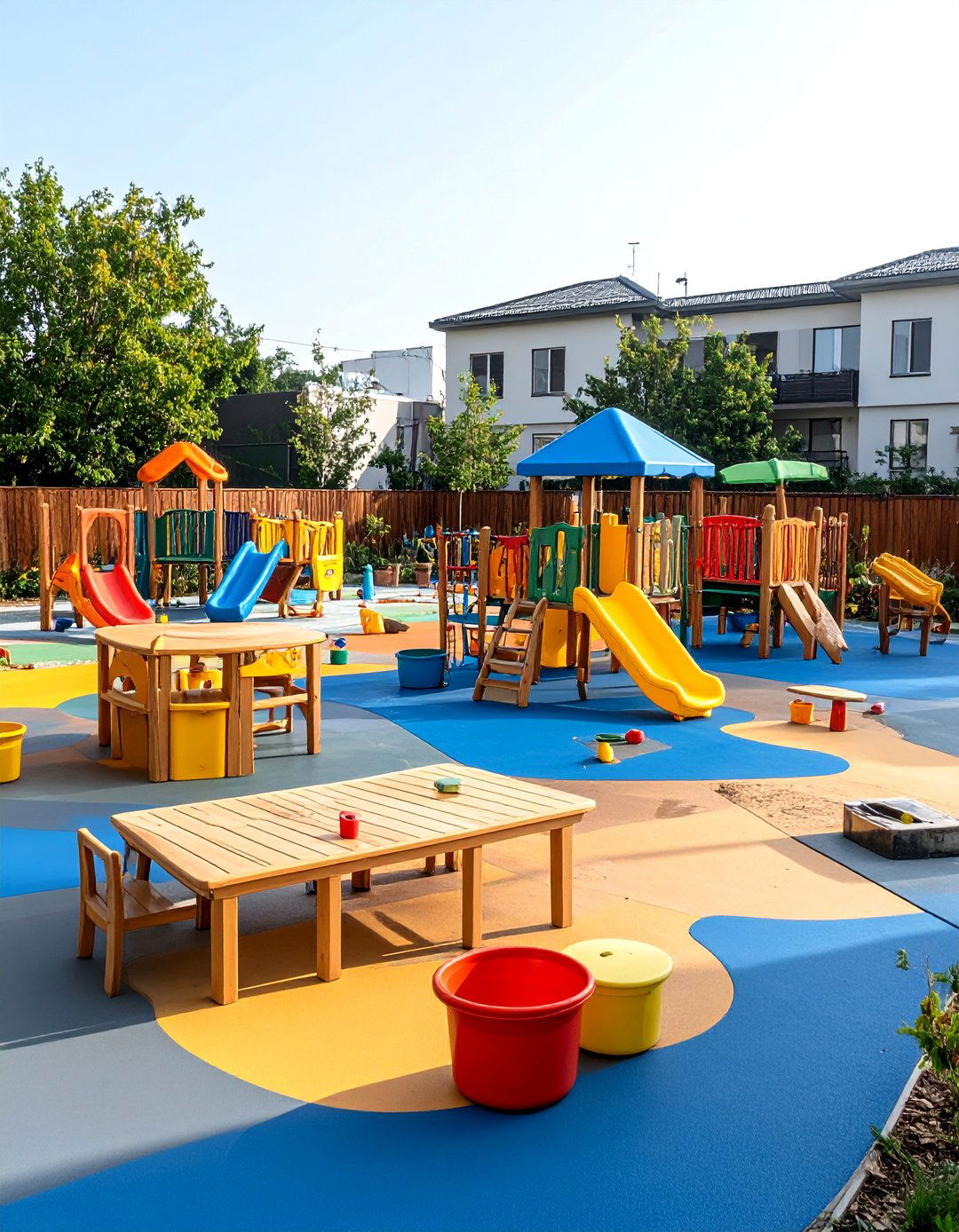
An EYFS outdoor messy play area provides guilt-free spaces for sensory exploration using materials that would be challenging to use indoors. This liberation zone includes washable surfaces, water access, and storage for messy materials like paint, clay, and natural substances that encourage uninhibited exploration. The messy area supports sensory development through tactile experiences while removing anxiety about cleanliness that can limit indoor exploration. Include protective clothing storage, cleaning stations, and drainage systems that maintain hygiene while enabling extensive messy investigations. The outdoor setting provides ventilation for strong smells and unlimited space for large-scale messy projects. This freedom-focused area teaches children that learning can be joyfully messy while providing stress-free environments for extensive sensory exploration and creative expression.
19. EYFS Outdoor Quiet Reflection Area
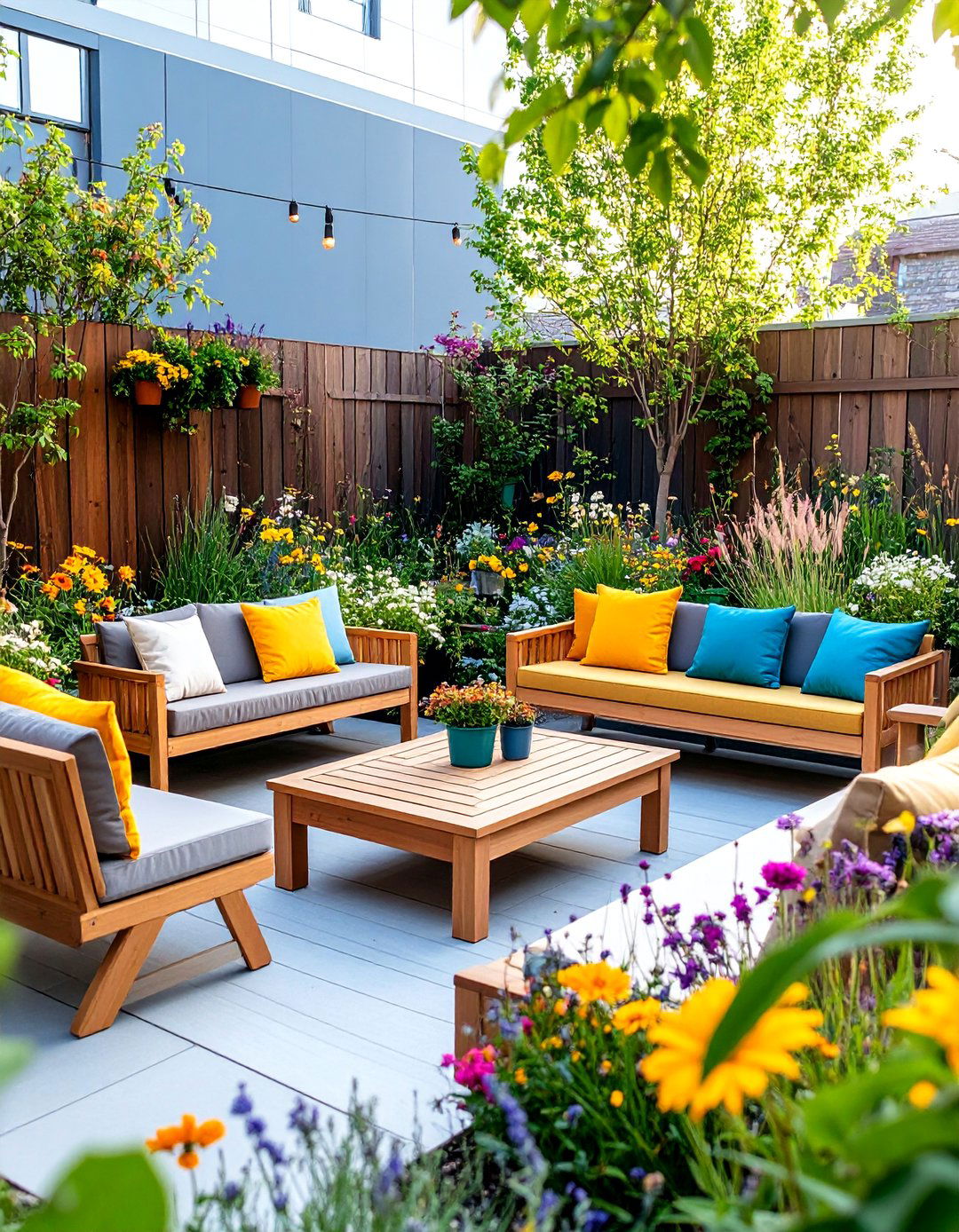
Creating an EYFS outdoor quiet reflection area provides peaceful spaces for emotional regulation and mindful observation in natural settings. This tranquil zone includes comfortable seating, natural screens for privacy, and calming elements that support mental well-being and stress management. The reflection area helps children develop emotional awareness while learning self-regulation strategies through connection with nature's calming influences. Include soft furnishings, natural materials, and gentle sensory elements that create soothing environments for contemplation. The quiet space supports children who need breaks from stimulating activities while providing venues for mindfulness and emotional processing. This wellness-focused area teaches children that quiet time is valuable while providing tools for managing emotions and developing inner peace through nature connection.
20. EYFS Outdoor Adventure Trail Area

Developing an EYFS outdoor adventure trail area creates exciting pathways that challenge physical skills while building confidence through progressive obstacles and discoveries. This expedition space includes varied terrain, stepping stones, balance challenges, and hidden surprises that maintain engagement throughout extended outdoor adventures. The trail area supports gross motor development while building perseverance and risk assessment skills through achievable challenges. Include maps, treasure hunt clues, and checkpoint activities that add educational elements to physical adventures. The adventure setting encourages exploration beyond immediate play areas while teaching navigation and direction-following skills. Safety features ensure appropriate challenge levels while maintaining security throughout trail experiences. This exploration-focused area builds resilience and confidence while connecting children to broader environments beyond their immediate outdoor classroom spaces.
Conclusion:
These 20 EYFS outdoor area ideas provide comprehensive frameworks for creating engaging, educational environments that support holistic child development. Each area addresses specific learning goals while encouraging natural curiosity and independent exploration. Successful outdoor provision combines safety with adventure, structure with freedom, and learning with joy. By implementing diverse outdoor areas, early years settings can ensure every child finds spaces that match their interests and developmental needs. The key lies in thoughtful planning, quality resources, and ongoing adaptation based on children's emerging interests and seasonal opportunities.



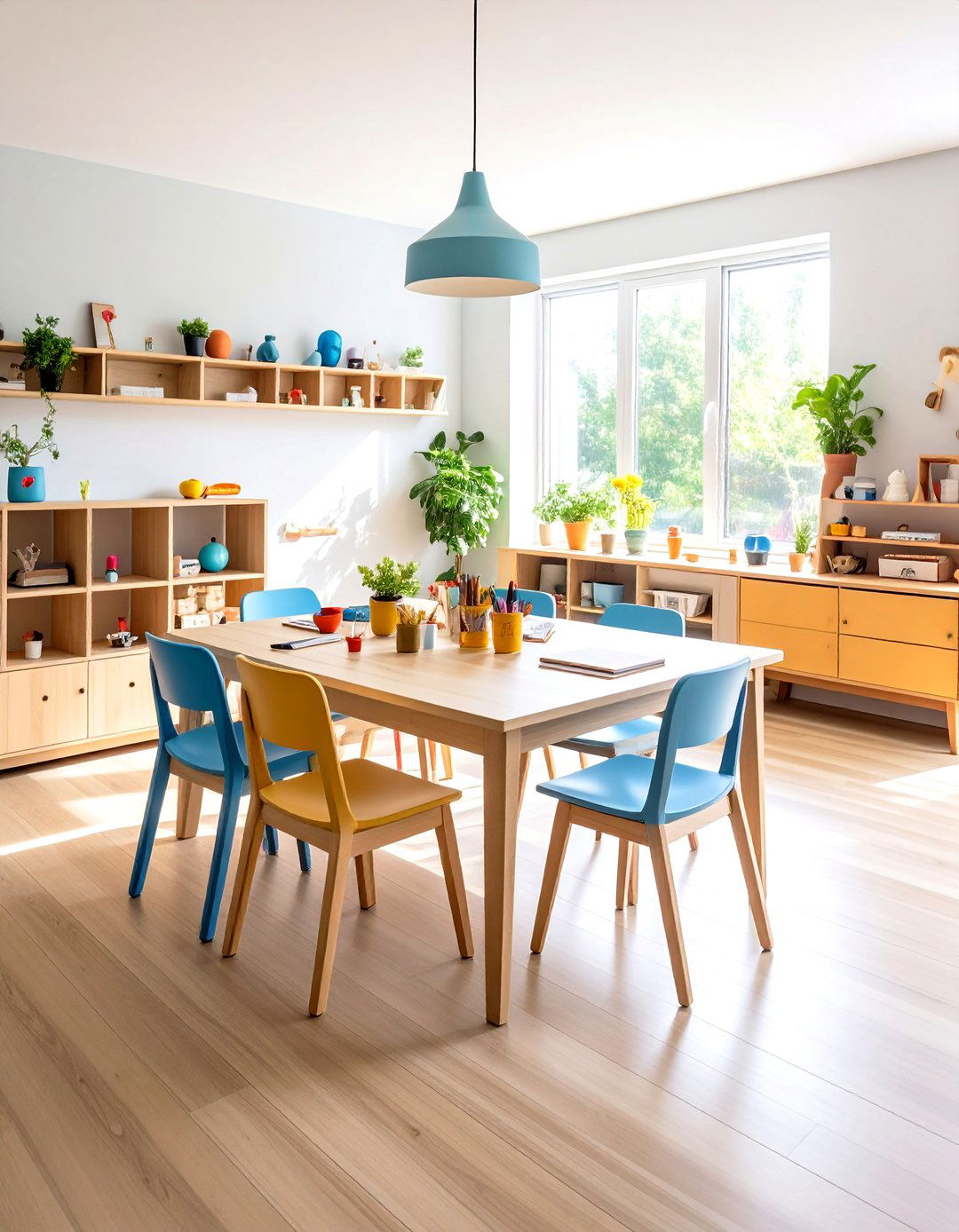

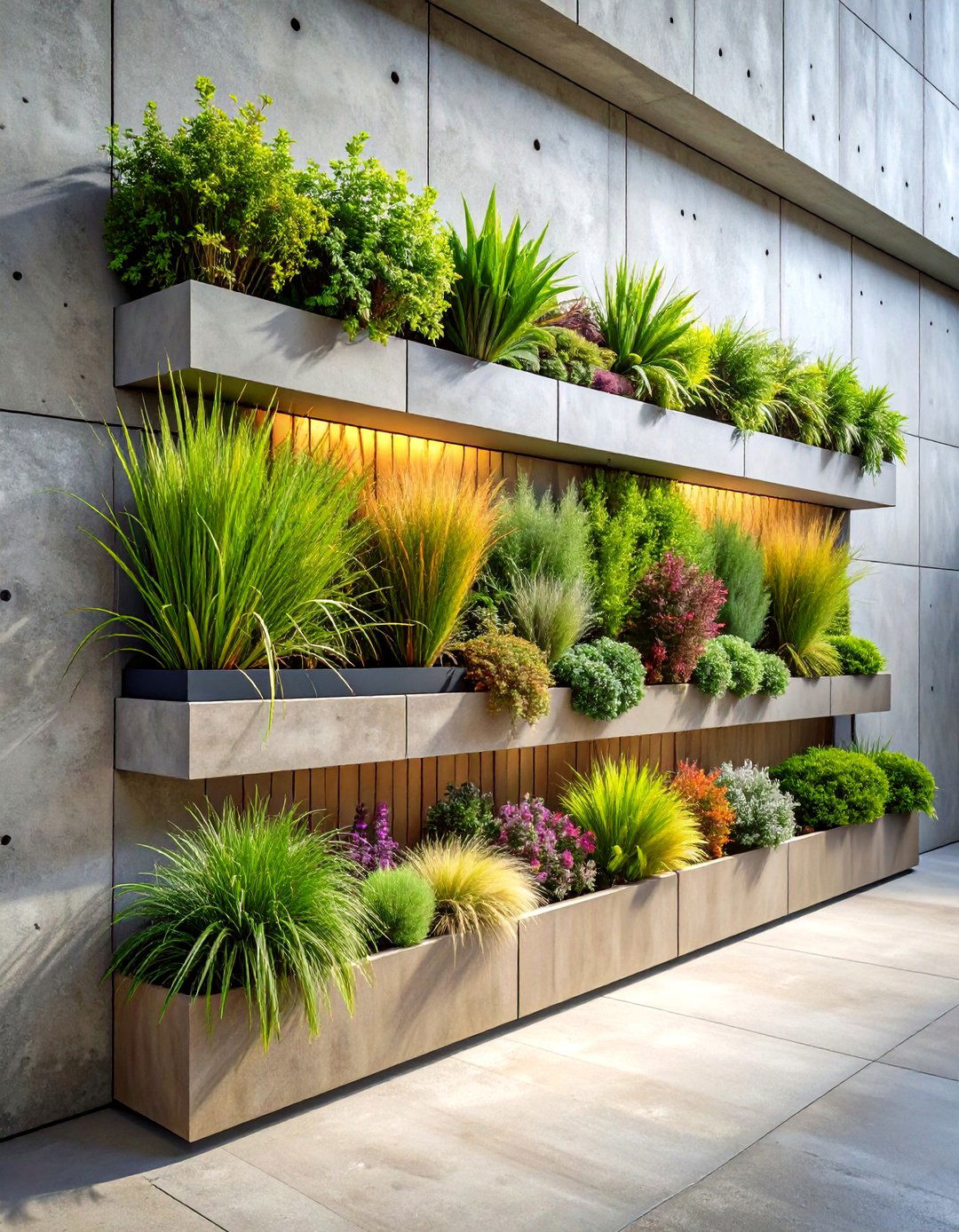
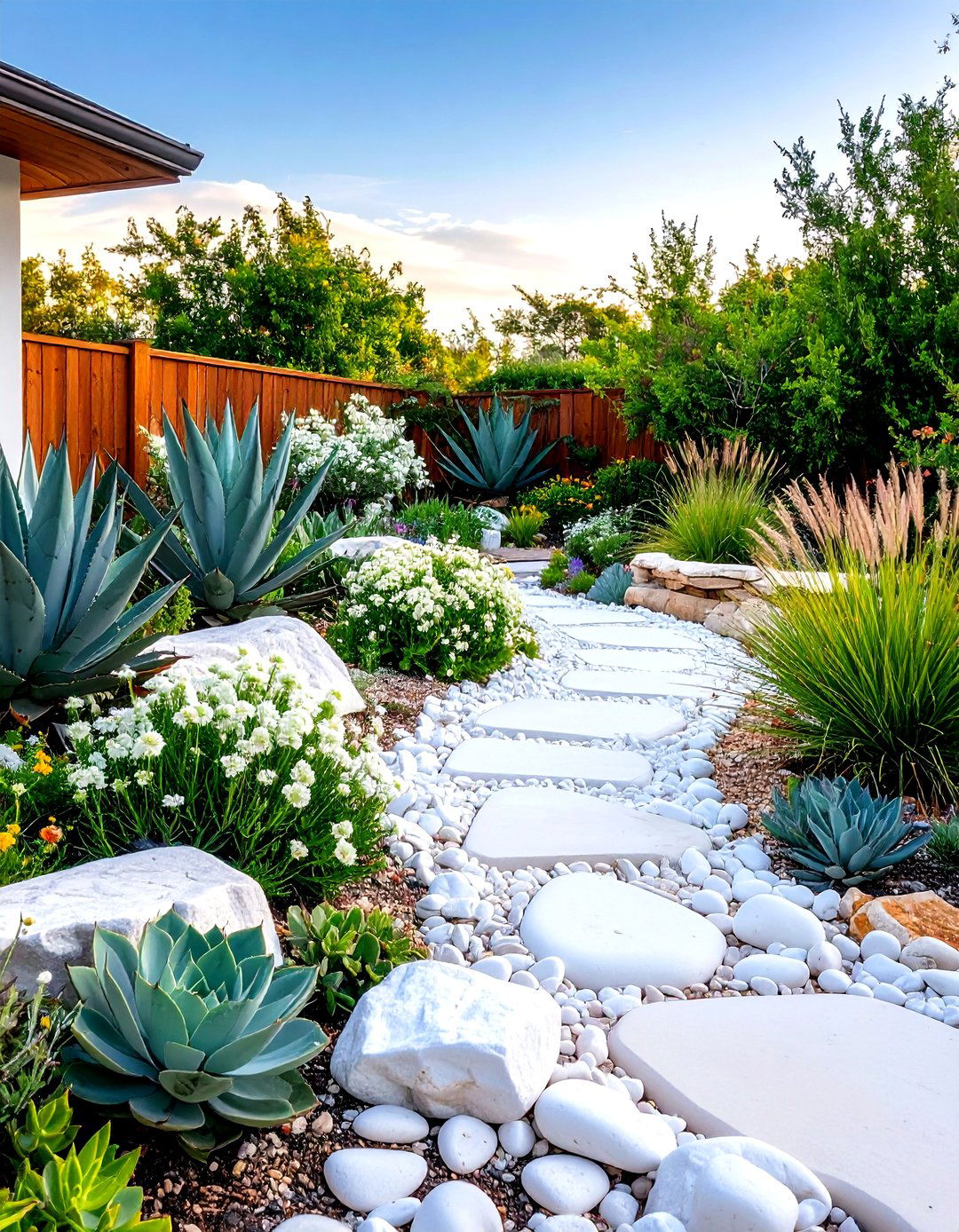
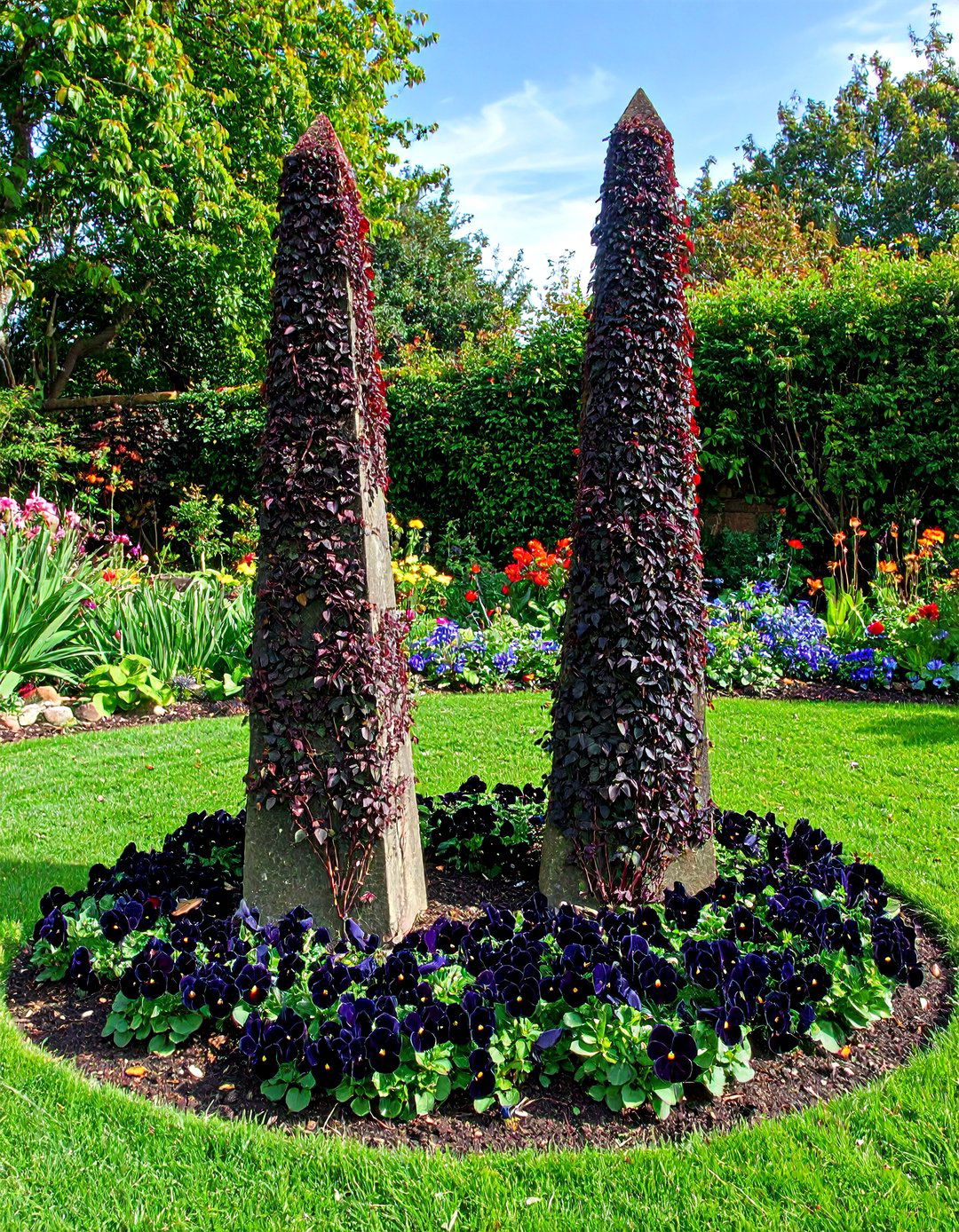
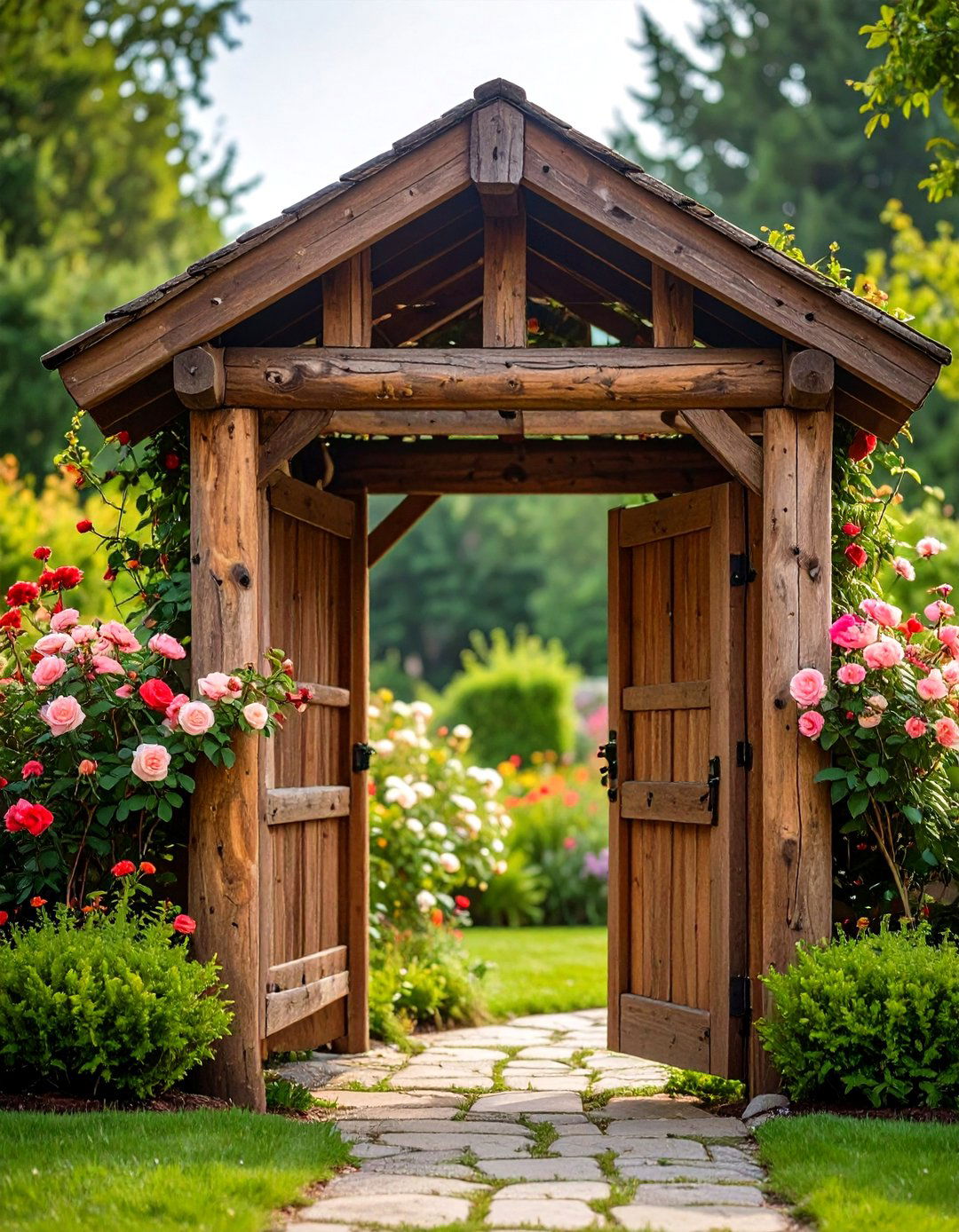

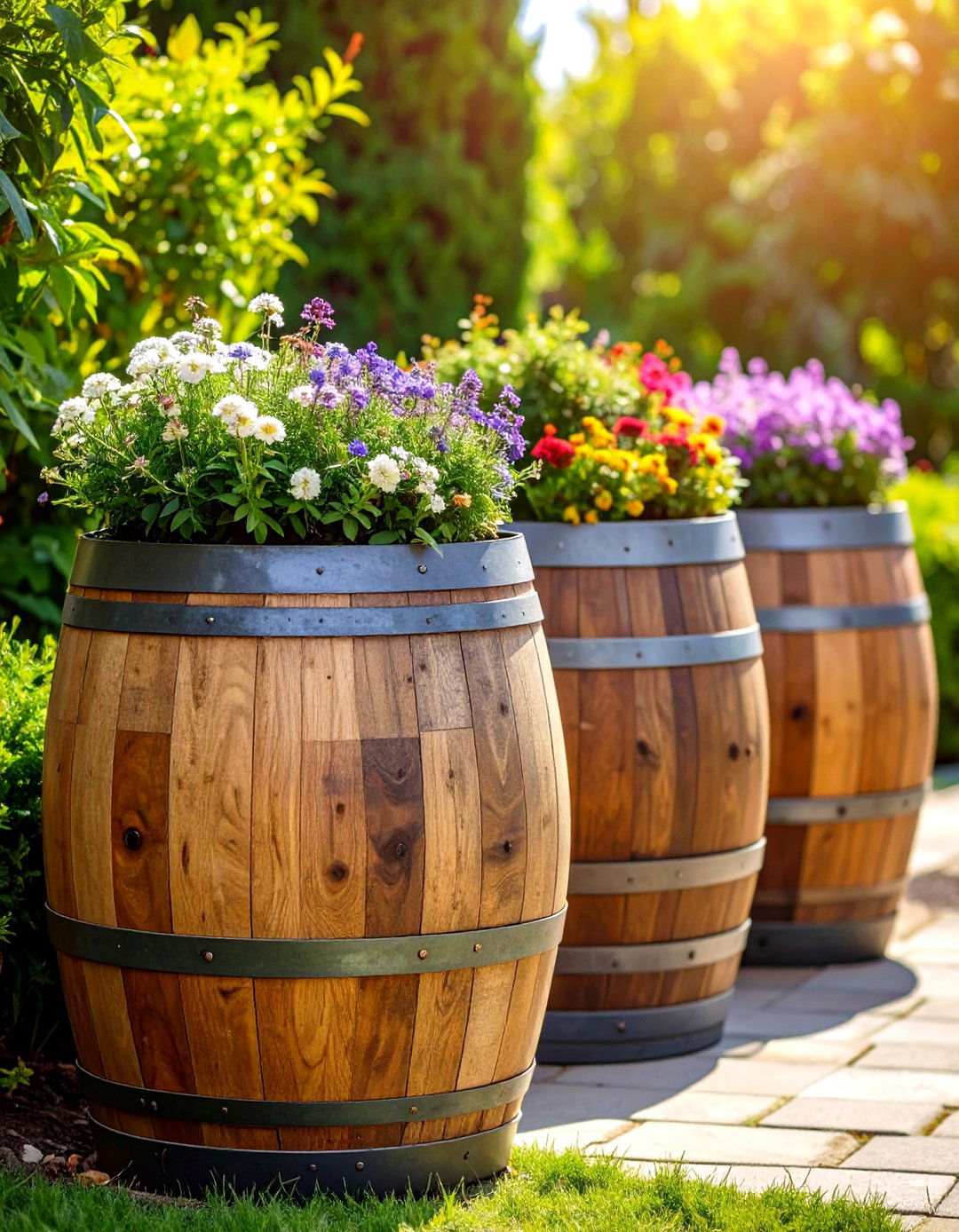
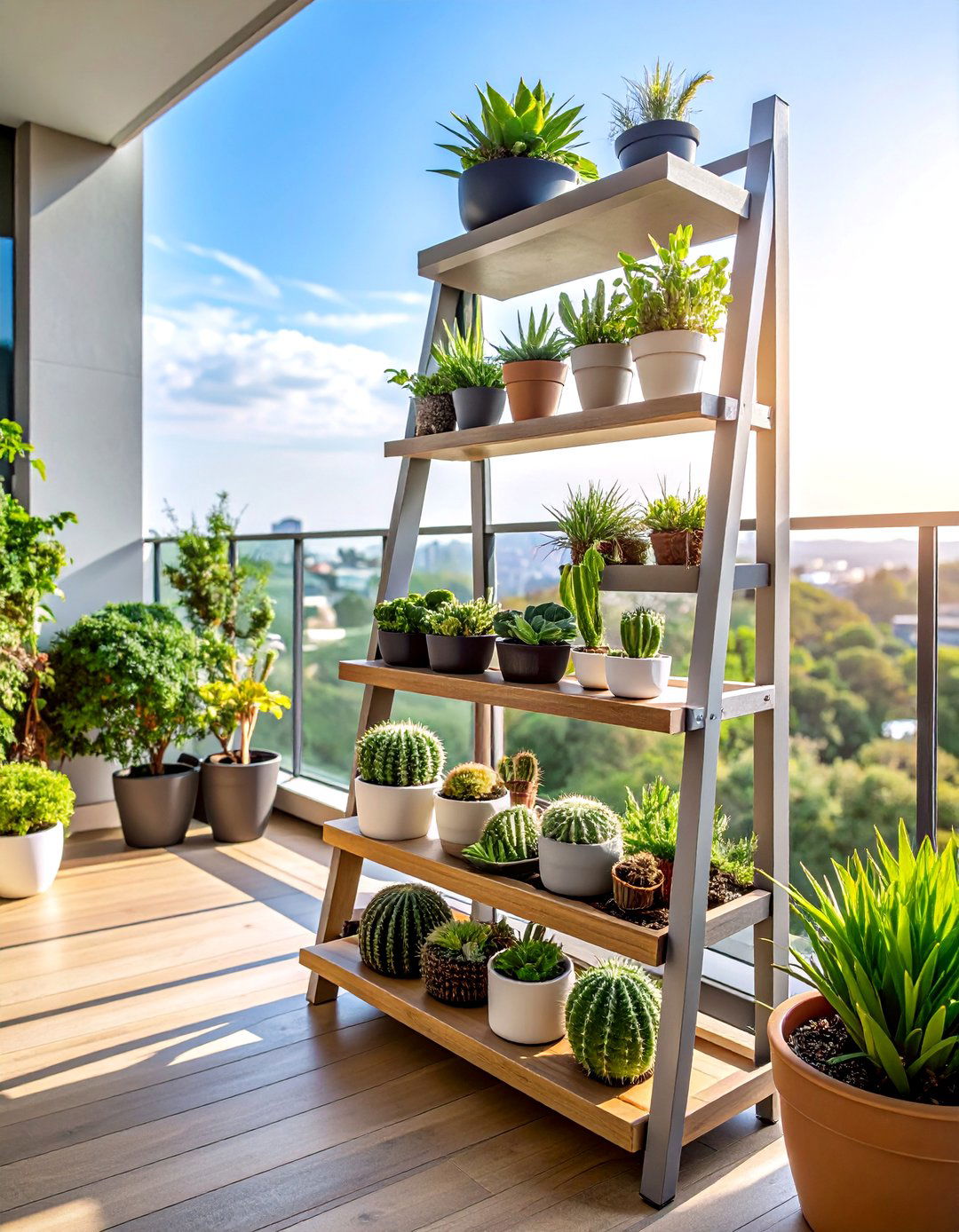

Leave a Reply